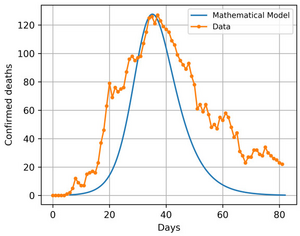Süleyman Cengizci, Aslıhan Dursun Cengizci, Ömür Uğur, A Mathematical Model for Human-to-Human Transmission of COVID-19: a case study for Turkey's data, Mathematical Biosciences and Engineering, 18(6): pp. 9787 - 9805 (Nov 2021).
Abstract
In this study, a mathematical model for simulating the human-to-human transmission of the novel coronavirus disease (COVID-19) is presented for Turkey's data. For this purpose, the total population is classified into eight epidemiological compartments, including the super-spreaders. The local stability and sensitivity analysis in terms of the model parameters are discussed, and the basic reproduction number, \(R_0\), is derived. The system of nonlinear ordinary differential equations is solved by using the Galerkin finite element method in the FEniCS environment. Furthermore, to guide the interested reader in reproducing the results and/or performing their own simulations, a sample solver is provided. Numerical simulations show that the proposed model is quite convenient for Turkey's data when used with appropriate parameters.
Keywords: COVID-19 pandemic, human-to-human transmission, mathematical modeling, finite elements, numerical simulation, Turkey case study
